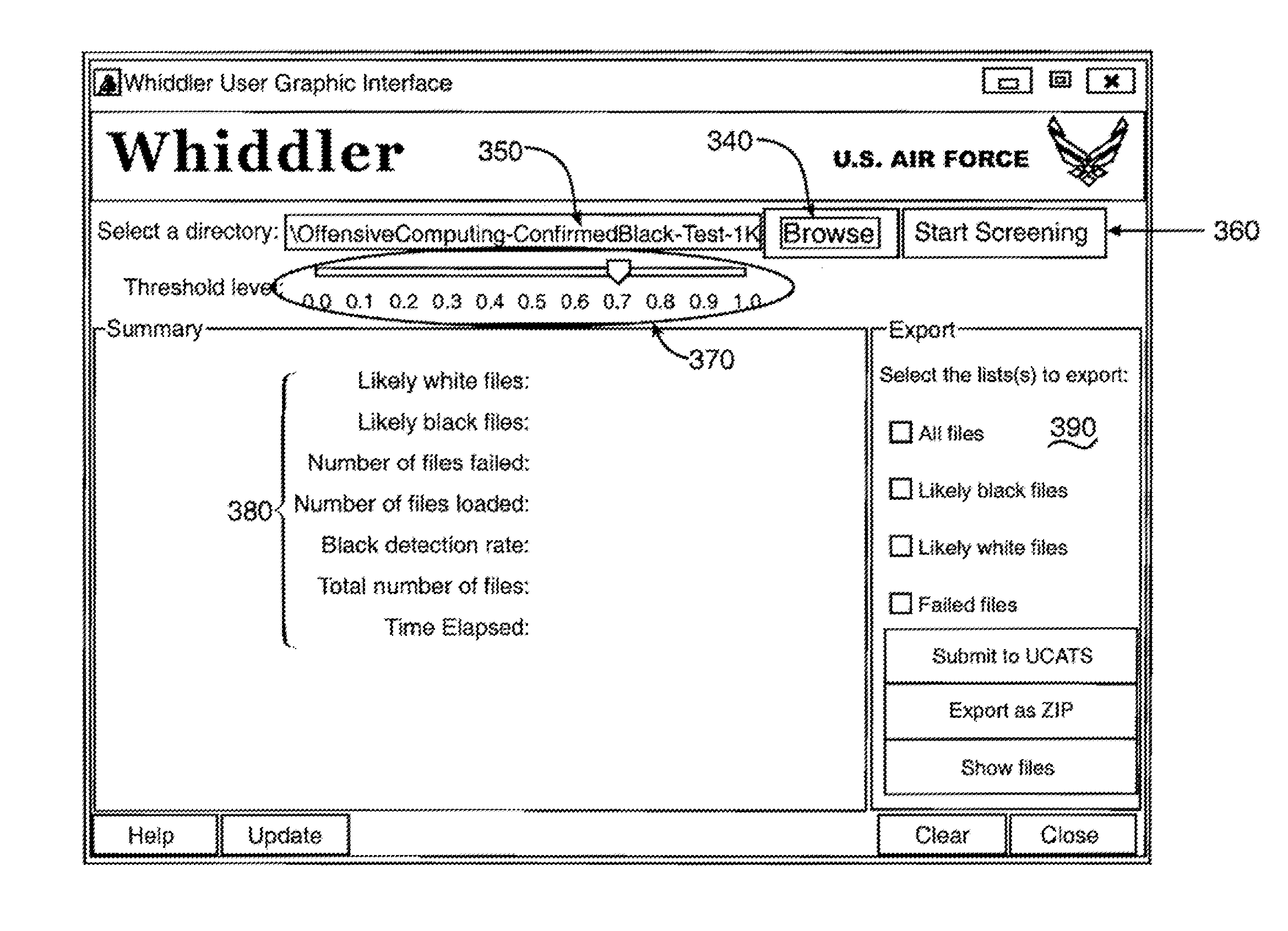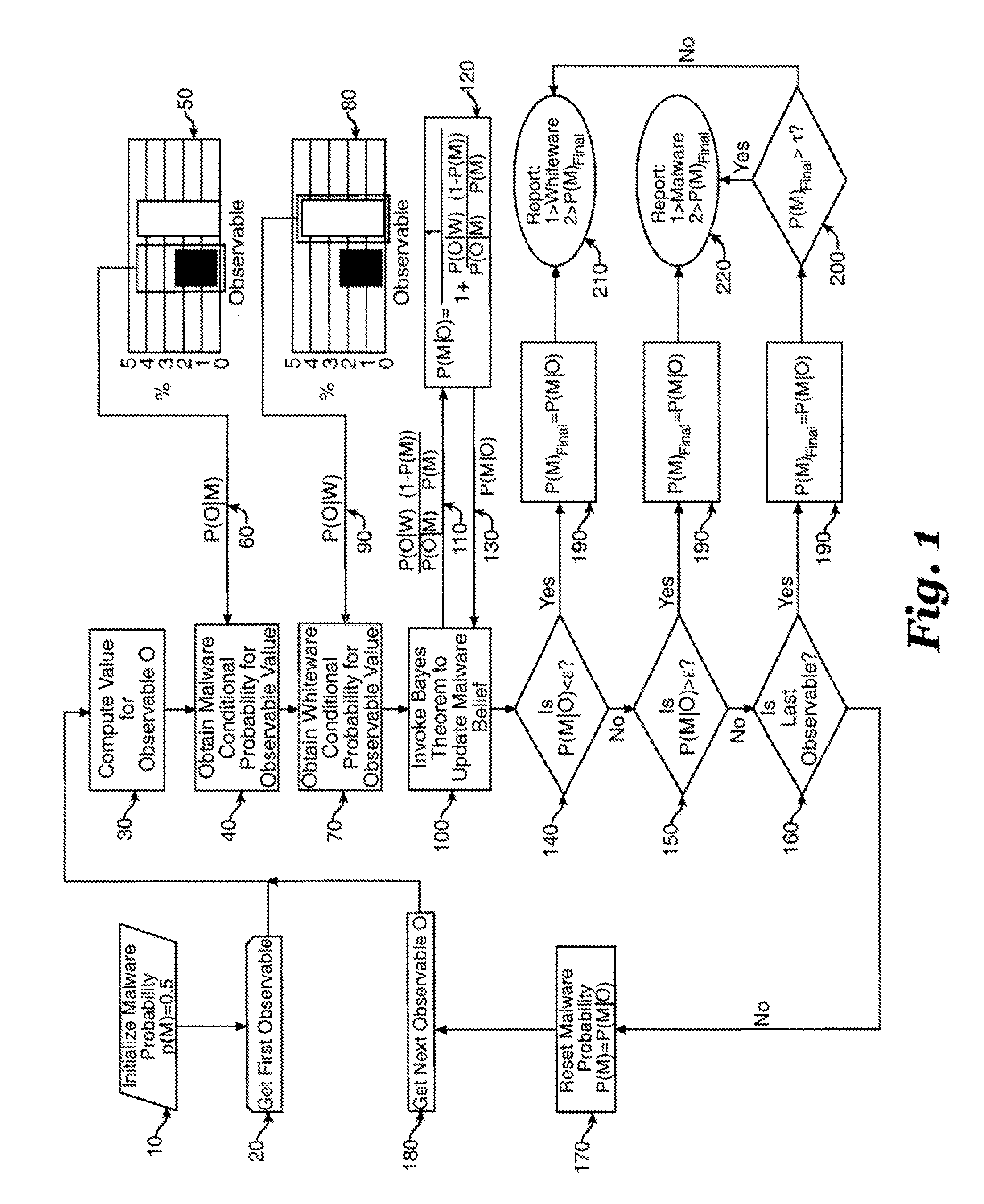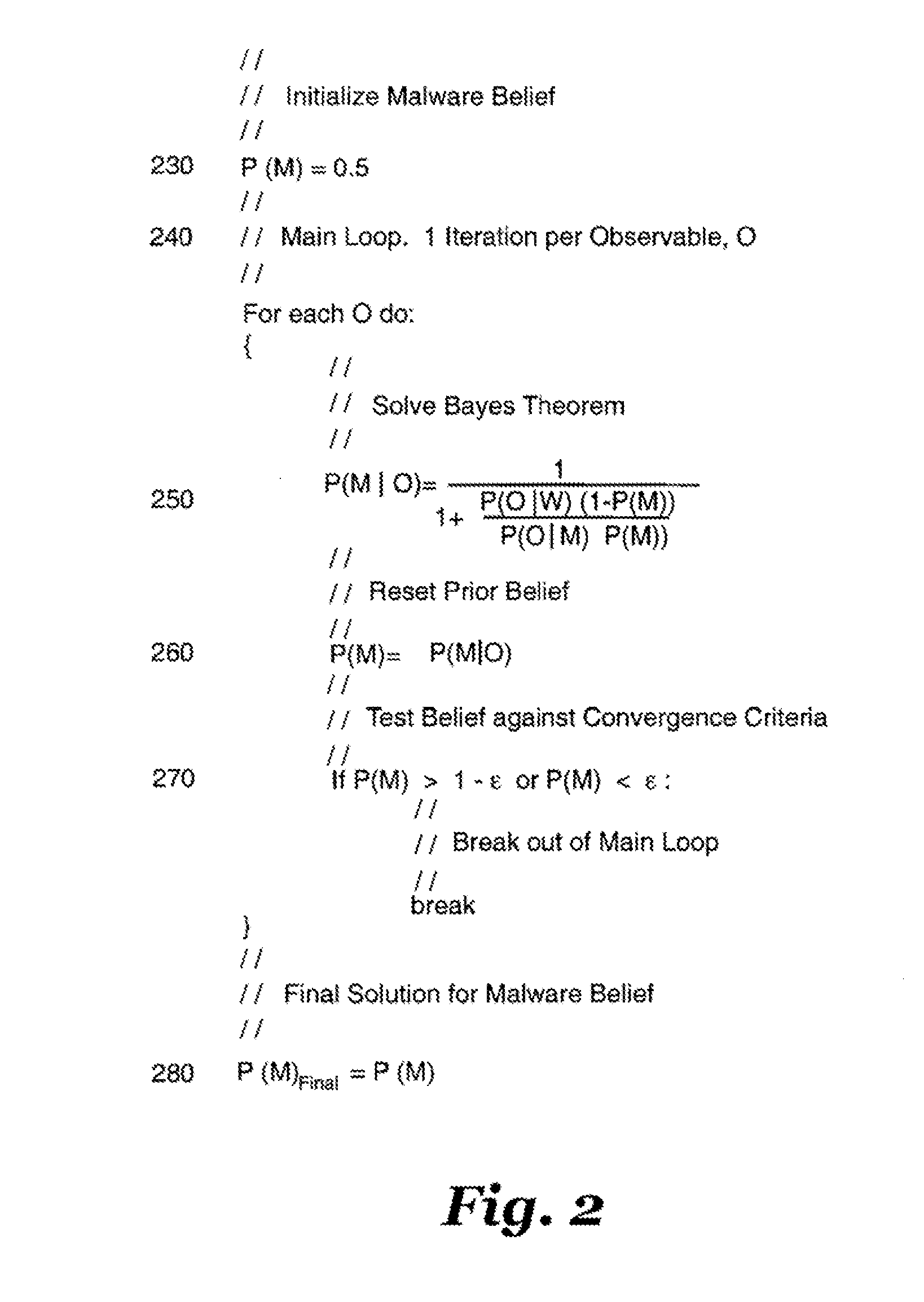Classifying computer files as malware or whiteware
a computer file and malware technology, applied in relational databases, database models, instruments, etc., can solve the problems of large network of government organizations and large companies, unpredictability of the number of individual computer users, and increased surface area exposed, so as to achieve less computational overhead and much faster determinations
- Summary
- Abstract
- Description
- Claims
- Application Information
AI Technical Summary
Benefits of technology
Problems solved by technology
Method used
Image
Examples
Embodiment Construction
[0027]The invention classifies computer files as malware or whiteware after using Bayes Theorem to evaluate each observable feature of each computer file with respect to other observable features of the same computer file with reference to statistical information gathered from repositories of known whiteware and malware files.
[0028]The invention utilizes Bayesian inference to classify computer files. Bayesian Inference is an effect-to-cause method of reasoning over statistics. The base variable is a statistical quantity termed the observable. In the Bayesian context, the observable is a physically measured effect, E. Once in hand, it is then used to update and refine beliefs in one or more possible causes for it. This is stated in the mathematical relation below as Bayes Theorem wherein C is a possible cause for the effect, E; P(C) is the prior probability of cause, C being the cause for the effect, E; P(E|C) is the probability of measuring effect, E conditioned on cause, C being tr...
PUM
 Login to View More
Login to View More Abstract
Description
Claims
Application Information
 Login to View More
Login to View More - R&D
- Intellectual Property
- Life Sciences
- Materials
- Tech Scout
- Unparalleled Data Quality
- Higher Quality Content
- 60% Fewer Hallucinations
Browse by: Latest US Patents, China's latest patents, Technical Efficacy Thesaurus, Application Domain, Technology Topic, Popular Technical Reports.
© 2025 PatSnap. All rights reserved.Legal|Privacy policy|Modern Slavery Act Transparency Statement|Sitemap|About US| Contact US: help@patsnap.com



